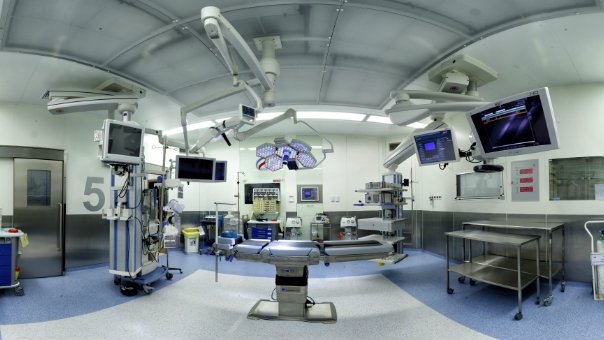Could infection prevention stop drug resistance in its tracks?
06 Apr 2017
Written by Sarah Bailey
Hospitals are where we go to be treated if we’re sick, but they can also be the source of illness. Healthcare associated infections (HAI) are infections contracted in a healthcare environment and often require antibiotics. They are a major cause of morbidity and mortality worldwide. Yet HAIs are preventable – if correct infection prevention and control is used. Reducing infections in hospitals therefore represents an important part of the fight against antibiotic resistance (or antimicrobial resistance, AMR).
Preventing and controlling infection
Hospitals and other healthcare settings, particularly those with inpatients, are difficult places in which to prevent infection spreading. They are usually large buildings with many visitors each day, bringing a constant influx of microbes from the community – from patients, relatives and hospital staff to name a few. Combined with the often open nature of hospital wards, where healthcare workers are responsible for treating more than one patient at a time, hospitals provide an ideal environment for microbes to spread.
Traditional infection prevention and control usually involves:
- Practising good hand hygiene
- Wearing personal protective equipment such as aprons, masks and gloves
- Ensuring bed linen is cleaned without spreading infection
- Keeping the hospital environment clean
- Disposing of waste contaminated with human body fluids in a safe way
During outbreaks, hospital workers may also isolate highly contagious patients and trace contacts to make sure they can be diagnosed and treated, or isolated, if found to be ill.

Researching infection prevention
Unfortunately, increases in the number of drug-resistant infections in hospitals, particularly for bloodstream infections, makes prevention and control more difficult. Drug-resistant HAIs are not only more difficult to treat, they’re also harder to remove from the hospital environment. With these new challenges, traditional infection prevention alone likely won’t be enough to prevent outbreaks.
Thankfully, researchers are looking into innovative ways to prevent drug-resistant infections from spreading in hospitals.
A team in Australia is using cutting edge technology to tackle the issue from a new angle. Using genomic sequencing – a way to identify the DNA of bacteria – the team will map drug-resistant infections and how they relate to each other in real time, not just in one hospital, but in several. If successful, we’d be able to understand how drug-resistant infections spread and be one step ahead of problematic, potentially outbreak-causing, infections, both stopping people becoming ill and therefore reducing the use of antibiotics.
High tech sequencing isn’t the only new approach to infection prevention. Increasingly, researchers from around the world are looking at ways to stop bacteria attaching to surfaces so that they can’t gain a foothold in the hospital environment.
A team in Syracuse in the United States has used polymer surfaces to make surfaces too slippery for bacteria to attach to, reducing Pseudomonas aeruginosa biofilms by up to 99.9%.
Others have turned to nature for inspiration, mimicking the bumpy properties of shark skin to create surfaces that bacteria can’t attach to, reducing transmission of Staphylococcus aureus between surfaces by over 90% compared to a smooth control surface.
To combat drug-resistant infections we of course need more than just good infection prevention – AMR is an issue that needs tackling from multiple angles. The development of new antibiotics and rapid diagnostic tests, and a reduction in antibiotic use in agriculture, are each essential parts of a one health approach. But innovations in infection prevention, particularly in hospitals, could reinvent this tried and tested method for reducing the burden of infectious diseases and help stop AMR in its tracks.
Image credit: PRRazavi Hospital
